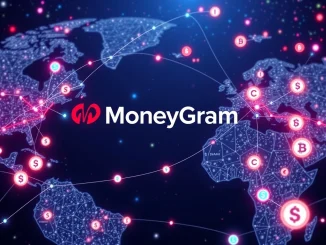
Hey crypto enthusiasts! Ever wonder why some stablecoins become giants while others struggle to gain traction? Arthur Hayes, the well-known co-founder of BitMEX, recently weighed in on this, arguing that the key to a stablecoin’s success isn’t just its technology or backing, but its ability to build robust Crypto Distribution Channels. It’s a crucial challenge facing the market today.
Why Are Strong Crypto Distribution Channels So Vital for Stablecoins?
According to Arthur Hayes‘ insights shared on his Substack, a stablecoin, no matter how well-designed, is useless if people can’t easily access and use it. Think of it like any product – availability matters. For stablecoins, this means seamless integration into exchanges, wallets, and payment systems where users operate daily. Without these smooth pathways, adoption remains limited.
Examining the Leaders: Tether USDT and Circle USDC
Hayes pointed to the current market leaders as prime examples of successful distribution strategies:
- Tether USDT: This stablecoin’s massive global presence is largely attributed to its deep-rooted collaboration with the Bitfinex exchange. Furthermore, Hayes highlighted the trust Tether USDT managed to build within the banking systems of the Greater China region (Hong Kong, Mainland China, and Taiwan), providing it with significant on/off-ramps.
- Circle USDC: While also a major player, Circle USDC, despite its partnership with Coinbase for distribution, still trails behind Tether USDT in terms of overall market share. This comparison underscores how different distribution approaches can yield varying results in the competitive stablecoin landscape.
The Challenge for New Stablecoin Issuers
The situation looks dire for newcomers trying to launch their own Stablecoins. The primary distribution points – major cryptocurrency exchanges – are largely tied up. Hayes noted that these platforms are either partnered with or directly owned by the established giants like Tether, Circle, and even newer players like Ethena (ENA). This creates a significant barrier to entry.
Adding to the challenge, traditional financial institutions (banks) and even social media companies are reportedly developing their own stablecoin or digital currency solutions. This further fragments the potential distribution landscape and makes it harder for independent new issuers to find a foothold.
The NIM Hurdle: Attracting Users to New Stablecoins
So, how can a new stablecoin hope to compete? According to the BitMEX executive, they will need to offer compelling financial incentives. Specifically, new stablecoin issuers will likely need to provide significantly high Net Interest Margins (NIM) to depositors. This means offering attractive yields to hold their stablecoin, hoping to lure users away from the highly adopted, existing Stablecoins like Tether USDT and Circle USDC.
This need to offer high returns puts pressure on the business model of new stablecoins and highlights the uphill battle they face against the network effects and established Crypto Distribution Channels of the market leaders.
In Conclusion
Arthur Hayes‘ analysis serves as a crucial reminder that in the world of Stablecoins, distribution is king. While innovation in technology and backing is important, the ability to get the stablecoin into the hands of users through accessible channels is paramount. The dominance of players like Tether and Circle, built on strong exchange and banking relationships, creates a tough environment for new entrants, forcing them to consider aggressive strategies like high NIM offerings just to gain a sliver of market share. The future success of any stablecoin hinges on its ability to navigate and build these vital distribution pathways.



